When to remove Exibition onions from the garden.
Content:
This onion variety is considered one of the most popular; it deserves attention for its taste and useful varietal characteristics. The bulbs are large enough and very juicy, which gives any dish, especially salads, an attractively piquant flavor. Yes, and in care, Onion Exhibiting is completely unpretentious, not requiring special efforts when growing a variety of onions. You can enjoy tasty onions on cold days of the year, the most important thing is to know how to choose the right time for harvesting, all the subtleties of harvesting and proper storage. And then there will be no problems with consumption even in winter cold. How to do this, to achieve a similar result? Our article is devoted exactly to all the intricacies of growing, collecting and storing Exhibitive onions.
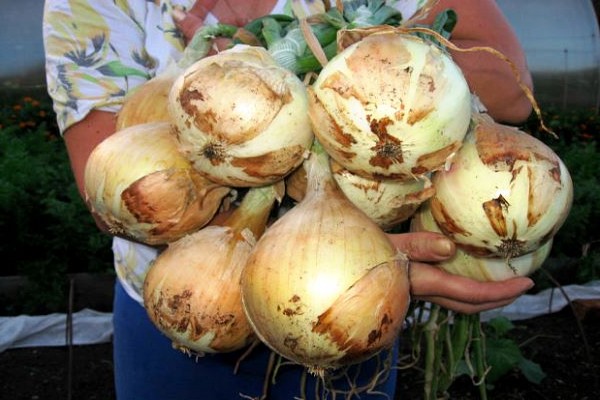
Varietal characteristics and features.
All varieties of onions, salad varieties, acquired love thanks to their excellent taste, perfectly combined with any ingredient in the salad, the taste is the softest, unlike the usual green onions, there is no bitter aftertaste.
Let's consider briefly the varietal characteristics of onions. A perennial plant from the onion family, a late ripening variety, after 115 days from the first green shoots, a period of maturity begins, the harvest is possible put away.Dark green leaves, slightly tubular, white feathers at the base, thin, in shape. Upon reaching a height of up to 20 cm, onions can be safely used in everyday food, at this time the density of the feathers is very soft, very delicate in taste. In the summer, June-July, the time of flowering comes, which in turn has a final stage in the form of the formation (formation) of a small capsule on a peduncle with contents in the form of seeds, triangular in shape. This is what the ground part of the bow looks like.
The bulb itself is round, sometimes slightly elongated, yellow scales completely cover the bulb. Directly about the pulp of the onion: white, juicy, fleshy, the usual bitterness is absent, on the contrary, a predominantly sweetish taste attracts special attention. Also, there is no specific aroma of onions familiar to everyone. The varieties are very productive, up to 3 kilograms can be removed from each square meter, and the weight of each fruit generally reaches 800 grams. These are the lovable onion giants. The shelf life of these root crops is not very long, however, under the right conditions, they can be stored for 3-4 months. Onions do not require special, special conditions for growing, but they are weakly resistant to cold temperatures, to frequent changes.
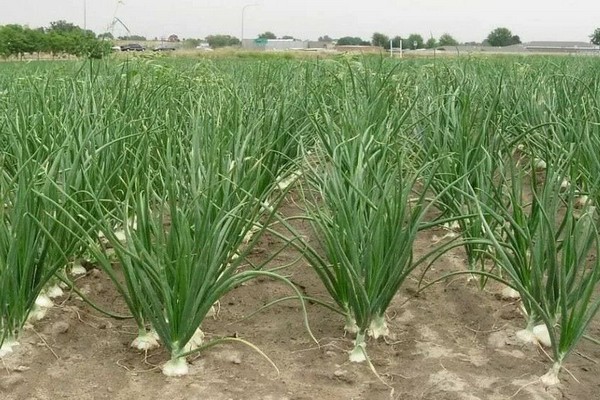
Maturity dates of the Exibishen onion.
How is the state of maturity of an onion ready for harvesting for storage determined? Of course, there are standards, but each region, each year, these terms differ, it all depends on local weather conditions. Maturation occurs at different stages of vegetative conditions. In practice, experienced gardeners can determine by external signs whether the harvest is ready or not. The beds are regularly inspected, especially at a time when 4 months have passed since the sowing of the Exhibichen onion.
We can emphasize a number of such signs:
-approximately 75-85% of the leaves of the plant turn yellow and just lay down in the garden.This phenomenon is associated with the fact that all nutrients, during this period, purposefully strive not to the green mass, but to the bulb itself, for a more enhanced formation;
- the stems of the plant become very soft, growth slows down significantly, or completely stops. This signals the full ripening of the fruit, further nutrients are not required, which were in the green plumage;
- the neck dries up, at the place of its cut there are no longer juicy onion feathers, it is in this state that you can harvest the crop for long-term storage, tubers in this state will not rot;
- onion scales dry up, turn golden, yellow, the peel becomes denser, thus protecting the bulbs from decay during storage;
-the roots die off by about 18% when the bulb ripens, it no longer needs moisture, and there is no need for nutrients.
An important point!
Do not delay harvesting under any circumstances. Waiting for the entire mass of green leaves to turn yellow, you can skip that optimal moment for harvesting, and the crop will simply overripe.
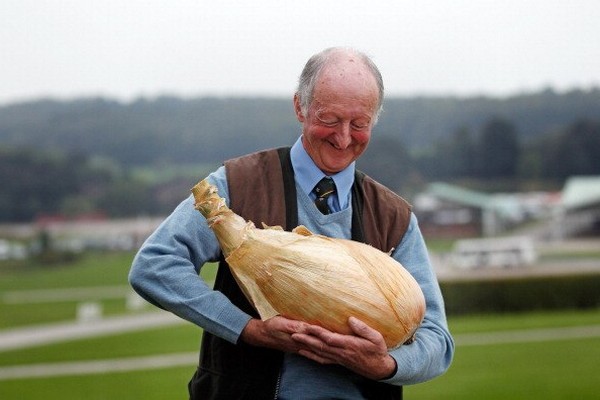
Harvesting time for storage.
If, according to all the rules of agricultural technology, determine the timing of the harvest, it is possible to extend the shelf life of the onion. On unripe bulbs, the scales are very thin for storage, unable to protect the onion from all adverse environmental conditions, as a result, most of the crop is damaged. In the event that overripening occurs, varietal taste is lost, and all the usefulness of the onion is also lost. The scales are easily removed from the surface of the fruit. As a result, most of the crop is lost again due to rapid decay. According to the rules of agricultural technology, the optimal period is from August to September. Such a period may depend on the territory of residence, onion cultivation, the climatic conditions of each region differ significantly in weather conditions. Most experienced gardeners, in addition, use the lunar calendar to determine the same interval. In those regions where a hot climate prevails, onions ripen many times faster. The northern regions are different, the time period for the completion of maturation increases, the process is slightly delayed. In any case, the collection must be carried out before the rainy season, especially before the first frost appears. These conditions significantly reduce the attractive taste, and the shelf life is reduced by a large percentage.
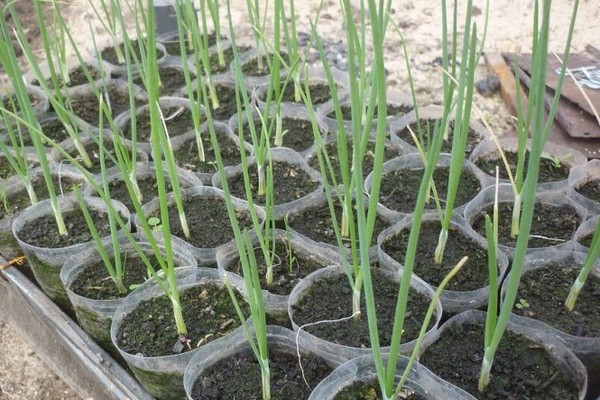
Below we list the timing of the onion harvest, taking into account all regional climatic conditions:
-Moscow region, middle zone of Russia- the collection begins in the last days of July, the deadline is the beginning of August. Rainy summer is the reason to postpone the collection for a certain period, no more than 10 days. In any case, the deadline is mid-August. By tightening it, you can expose the lukavitsy to damage by the first night changes in air temperature, the first frost;
-Siberia and the northwest region- Exhibishen onions begin to be put away for storage in the last days of August. In the case when you observe incomplete ripening of the fruits for the period of collection, the collection is postponed to the first ten days of September. But a later harvesting process will lead to overripening, and as a result, the shelf life of the bulbs is reduced. The rainy season in this region begins in mid-September, the unharvested crop can simply rot all over;
-Ural-the first half of August is the harvesting period, these are the usual dates for every experienced gardener. In the event that the weather is warm, sunny, the collection is carried out in the middle of the month, the 20th is the deadline, after which a period of cold snaps begins, in accordance with the lunar calendar.
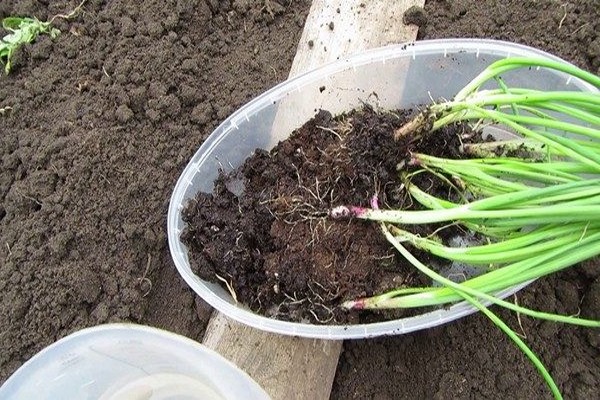
Lunar harvest time.
Many gardeners adhere to the lunar calendar, when determining the timing of planting, harvesting, so as not to miss the most favorable moment. This is explained by the influence of various phases of the moon on the movement of sap and vital nutrition along the plant stem. You can, of course, use personal observations of the lunar phases, but the best option would be to use the lunar calendar compiled by specialists for the current season.
Below we list all the rules for harvesting onions based on the compiled lunar calendar:
- the new moon has passed, at this time the movement of the sap along the stem of the plant tends upward. If you dig up the bulbs at the moment, storage will be short-lived, and the juiciness of the onion pulp is much less;
- full moon, the most optimal period for harvesting a crop, during this time period the plant acquires the maximum nutritional value;
- the phase of the waning moon has begun - the movement of the juice along the stem purposefully moves into the underground base of the onion, having dug out the bulbs during this period, you will get a fairly juicy, ripe harvest, the shelf life, at the same time, increases.
Using observations and recommendations on the lunar calendar, do not forget that it is also necessary to take into account the weather conditions, at present they are becoming completely unpredictable, it is impossible to rely on the calendar with accuracy. External indicators of onion maturity depend on weather changes.

The correct method of cleaning from the garden, pruning and drying Exibition onions.
Onion Exible, the name is original, varietal features are also original, distinctive from any other onion signs. Everyone asks the question, perhaps the harvesting methods are also different? As with harvesting any of the onion varieties, care must be taken. Even minor mechanical damage can lead to early decay of the bulb. Even ideal storage conditions are not conducive to storing damaged bulbs.
We list the main, most optimal, rules for digging out bulbs that are ripe for storage:
- the entire harvesting process is carried out strictly in sunny, warm, dry weather. At this moment, the bulbs are not filled with excessive moisture, storage becomes of the highest quality;
-when digging, try to use a pitchfork, very carefully undermine the roots of the fruit, then carefully pick it out of the soil with your hands;
-when the fruits are removed from the ground, carefully shake off the remnants of the soil, clods, while trying not to hit the fruits, avoiding damage to their integral state;
- if at the time of ripening it is rainy weather, the tubers must be urgently dug up, while additional ventilation and drying must be provided. Otherwise, the crop will inevitably begin to rot;
- for the harvest harvested in rainy weather, initially trim the bulbs from the feather top and only then send them for additional drying.
No special, sharp efforts should be made to pull the bulbs out of the soil by the feathers - damage may appear, the root crop is considered unsuitable for long-term storage.
How to properly trim the crop, and then dry it?
The bulbs in any case need to be dried, the intensity depends on the weather conditions for the harvesting period. This procedure helps to eliminate excess moisture from the bulbs, while the storage time increases.
An important point! Depending on the selected drying method, weather conditions, temperature, drying lasts for 15-20 days.
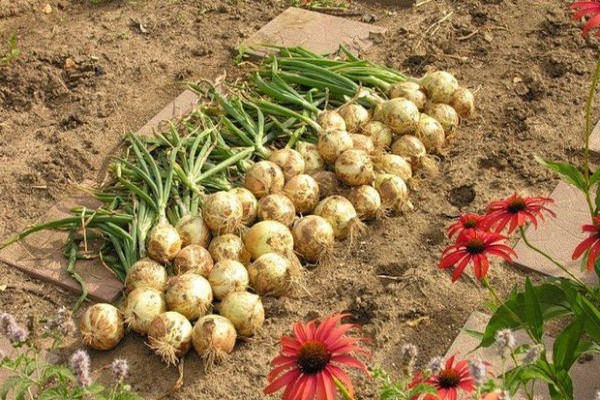
Below we list the most applicable rules for the drying procedure:
-If it is sunny weather, spread the bulbs directly on the garden bed after digging, strictly in one layer, for greater effect;
- at night, if weather conditions allow, leave the fruits in the garden, but cover with foil.If there is a hiding place, the roots can be moved there to protect the bulbs from dew;
-when the weather is rainy at the time of harvest, after the process of digging and cutting the upper part of the bulbs, bring the fruits into the room and dry, for at least 8 hours in the oven at 40 degrees. Then about another two weeks just in a room where the optimum temperature does not exceed 30 degrees;
- for uniform drying of the bulbs, fruits laid out in one layer must be periodically turned over;
-When drying indoors, high-quality air ventilation is required;
-the area where the fruits are located can be lattice, which serves to the presence of excellent circulation of air flows;
- in the case when the weather is still sunny, after collecting and cutting the onions, the fruits can be hung vertically over the area of the fence, drying is faster due to the sun's heat.
Let's pay a little attention to external signs, by which it is possible to determine the degree of readiness of the bulbs for further storage:
- the neck of the fetus becomes dry, the edges are completely closed;
- the peel is very smooth to the touch, rustles noticeably from the touch;
- the surface of the bulbs becomes dry and hard;
- cracked husk indicates that the bulb is overdried, such a fruit is no longer subject to long-term storage.
It is advisable to completely cut the tops and roots after the plant is completely dry. The process of digging out onions in the rainy season is an exception to the rule, in this case, it is necessary to prune immediately after digging out of the soil.
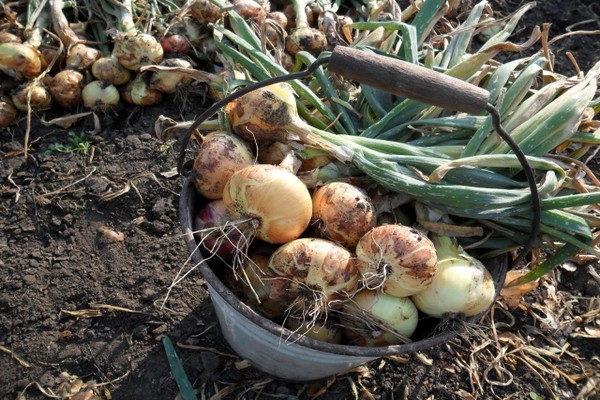
A number of recommendations can be emphasized that are aimed directly at the quality of onion pruning:
-when cutting dried tops, it is necessary to leave a slight tail on the bulb, about four centimeters, helps to prevent the entry of various pest bacteria into the fruit;
-you prefer to store the onion with the help of a plexus of peculiar braids, when trimming onion feathers, leave the tail at least 10 centimeters;
-to trim the root, use only scissors, cutting right down to the base of the bulb, but very carefully, without damaging the bottom of the bulb;
-in a rainy season, when harvesting, both the root and tops are immediately cut off, the bulbs are immediately peeled from the husk, this will prevent rapid decay.
Home storage, subtleties.
The crop is harvested, dried with high quality. The process of selection of the most whole, without various damages, fruits begins. Then we send it to storage. Improper storage conditions, even despite high-quality drying, can lead to non-preservation of the fruits, your entire crop will simply die. It is necessary to strictly follow all the rules of home storage for a long period, comfortable conditions are created in the storage so that the storage of onions would meet your expectations as much as possible.
Comfortable conditions, methods, places, shelf life of Exibishen onions.
It is necessary to take into account the fact that the fruits of the selected variety are characterized by poor keeping quality, which is why strictly observe all storage rules.
Below we list the main, more used by experienced gardeners, rules (requirements) for the preservation of the Exibishen variety:
- the temperature regime in the room is not higher than +4 degrees, the lower temperature exposes the fruits to freezing, and vice versa, above the required degree, the fruits rapidly begin to rot;
-the selected room for long-term storage of culture must be strictly dry, well ventilated. Air stagnation contributes to the rapid decay of the bulbs;
-It is known that the sun's rays significantly reduce the shelf life of the onion, so it should be dark in the room;
-strictly monitor the humidity of the air, about 70%. High humidity leads to rotting of fruits, and drier air contributes to the rapid wilting of onions;
- drafts and sudden changes in temperature have a detrimental effect on the entire crop.
Both a cellar and a basement can serve as such a room for long-term storage of a variety of onions. The most important thing is to comply with all of the above points for successful storage.
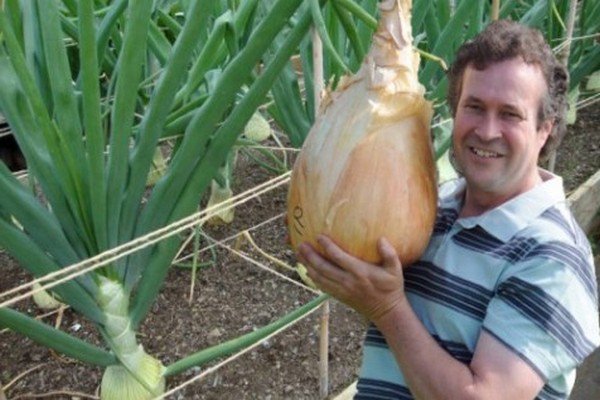
Let's emphasize the optimal storage methods:
- bulbs are stored in clean nylon bags, which are installed on wooden stands (pallets);
- it can be stored in a regular wicker basket, as well as in lattice trays that can be stacked on top of each other;
- there is a variant of using grids, which we place vertically, by hanging them to the support;
- wooden boxes or a box, be sure to fill them with sawdust or wood ash;
- if during the collection you braided pigtails, then storage can be carried out in the same form, hanging it under the ceiling, or along the walls of the storage.
What about shelf life?
To the great regret of the entire gardening office, the varietal feature of the Exhibichen onion is short storage, even if all the rules for such a procedure are followed. Bulbs can survive for no more than 4 months. You can, of course, slightly extend the storage period, regularly inspect the stored crop, while removing slightly spoiled bulbs, where there is mold or rot. When you select dried root crops, it is necessary to strictly approach this important process, any mechanical damage, even not significant at first glance, will stimulate the appearance of rot and spread to the nearest bulbs. Therefore, strictly use such fruits for food, do not allow them to enter the premises where the main crop is stored.
An important point!
It is strictly forbidden to store root crops on a cold floor in a storage room, it is not recommended to store them in a large heap, it is difficult to air, regular viewing, hence the threat of mass decay of all fruits.
Even taking into account all the varietal characteristics of onions, short storage periods, observing all the listed rules and recommendations, you can enjoy all the taste and useful qualities of this onion variety for a fairly long period. We hope the article was useful to you, and the tips and tricks will help you achieve high results when growing Exhibitive onions.

